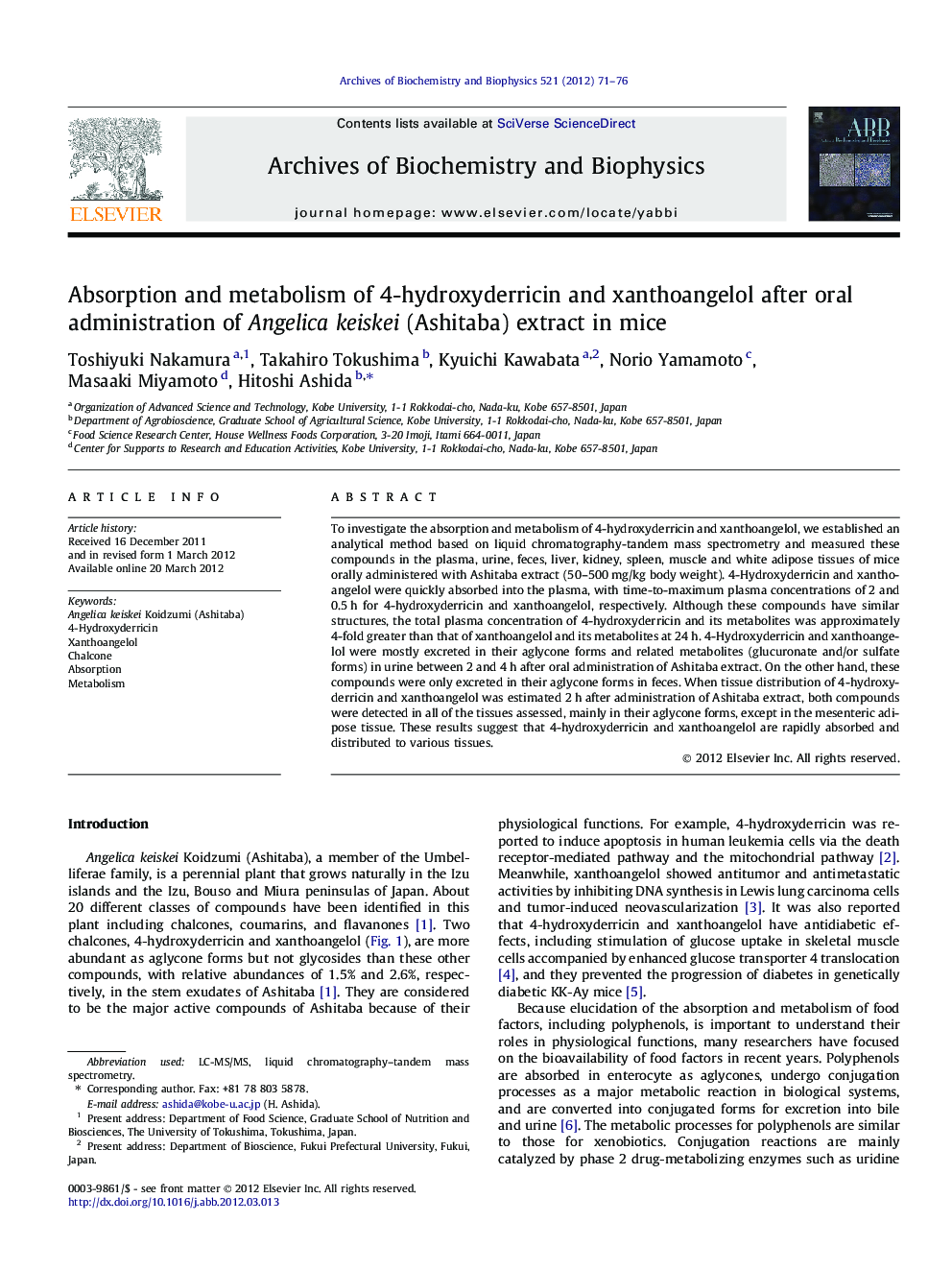| Article ID | Journal | Published Year | Pages | File Type |
|---|---|---|---|---|
| 1925570 | Archives of Biochemistry and Biophysics | 2012 | 6 Pages |
To investigate the absorption and metabolism of 4-hydroxyderricin and xanthoangelol, we established an analytical method based on liquid chromatography-tandem mass spectrometry and measured these compounds in the plasma, urine, feces, liver, kidney, spleen, muscle and white adipose tissues of mice orally administered with Ashitaba extract (50–500 mg/kg body weight). 4-Hydroxyderricin and xanthoangelol were quickly absorbed into the plasma, with time-to-maximum plasma concentrations of 2 and 0.5 h for 4-hydroxyderricin and xanthoangelol, respectively. Although these compounds have similar structures, the total plasma concentration of 4-hydroxyderricin and its metabolites was approximately 4-fold greater than that of xanthoangelol and its metabolites at 24 h. 4-Hydroxyderricin and xanthoangelol were mostly excreted in their aglycone forms and related metabolites (glucuronate and/or sulfate forms) in urine between 2 and 4 h after oral administration of Ashitaba extract. On the other hand, these compounds were only excreted in their aglycone forms in feces. When tissue distribution of 4-hydroxyderricin and xanthoangelol was estimated 2 h after administration of Ashitaba extract, both compounds were detected in all of the tissues assessed, mainly in their aglycone forms, except in the mesenteric adipose tissue. These results suggest that 4-hydroxyderricin and xanthoangelol are rapidly absorbed and distributed to various tissues.
► An analytical method for Ashitaba chalcones was established using LC–MS/MS. ► Ashitaba chalcones were rapidly absorbed in the body and excreted in feces and urine. ► Some Ashitaba chalcones were metabolized to sulfate and glucuronate forms. ► Ashitaba chalcones were distributed in various tissues, mainly as aglycones.
